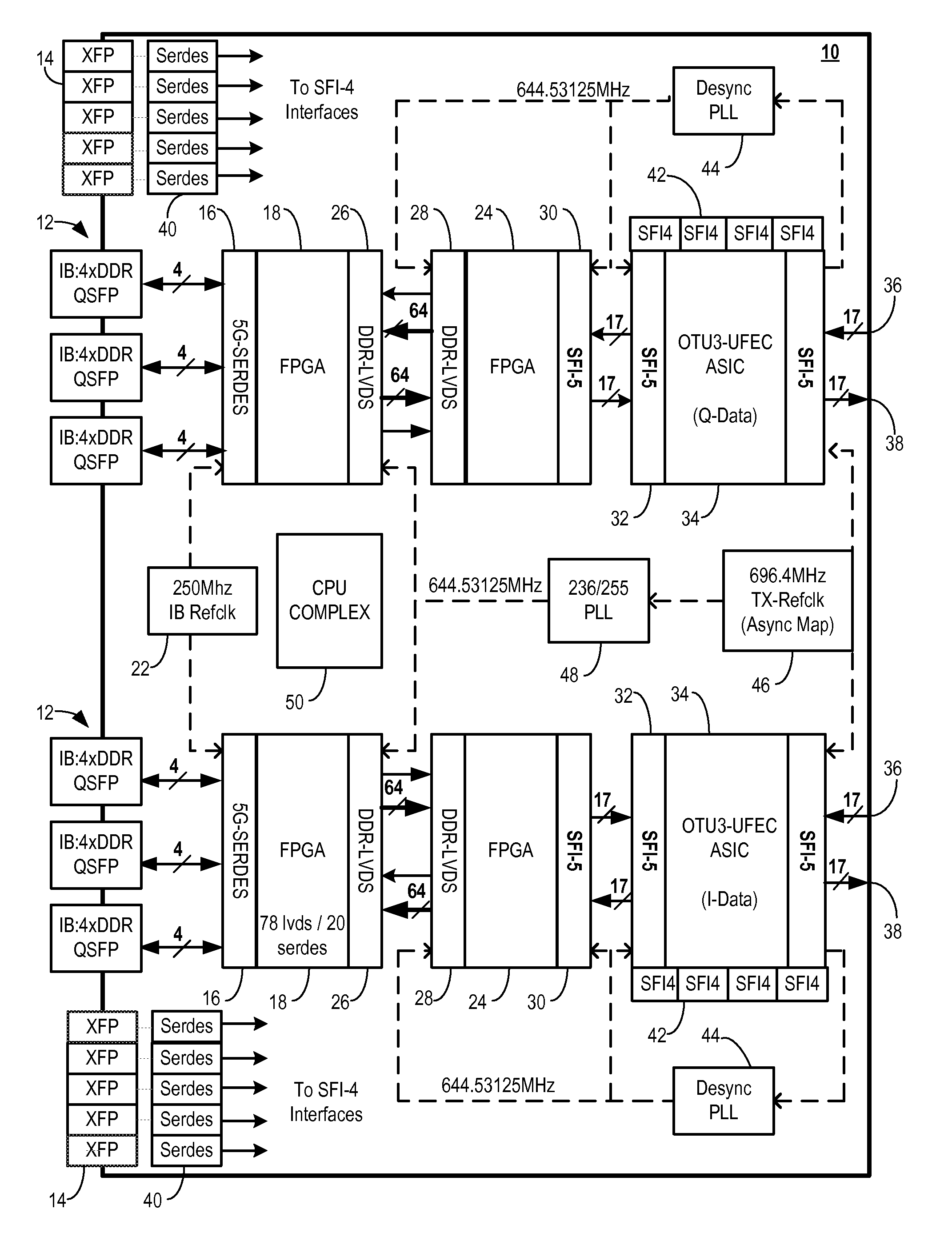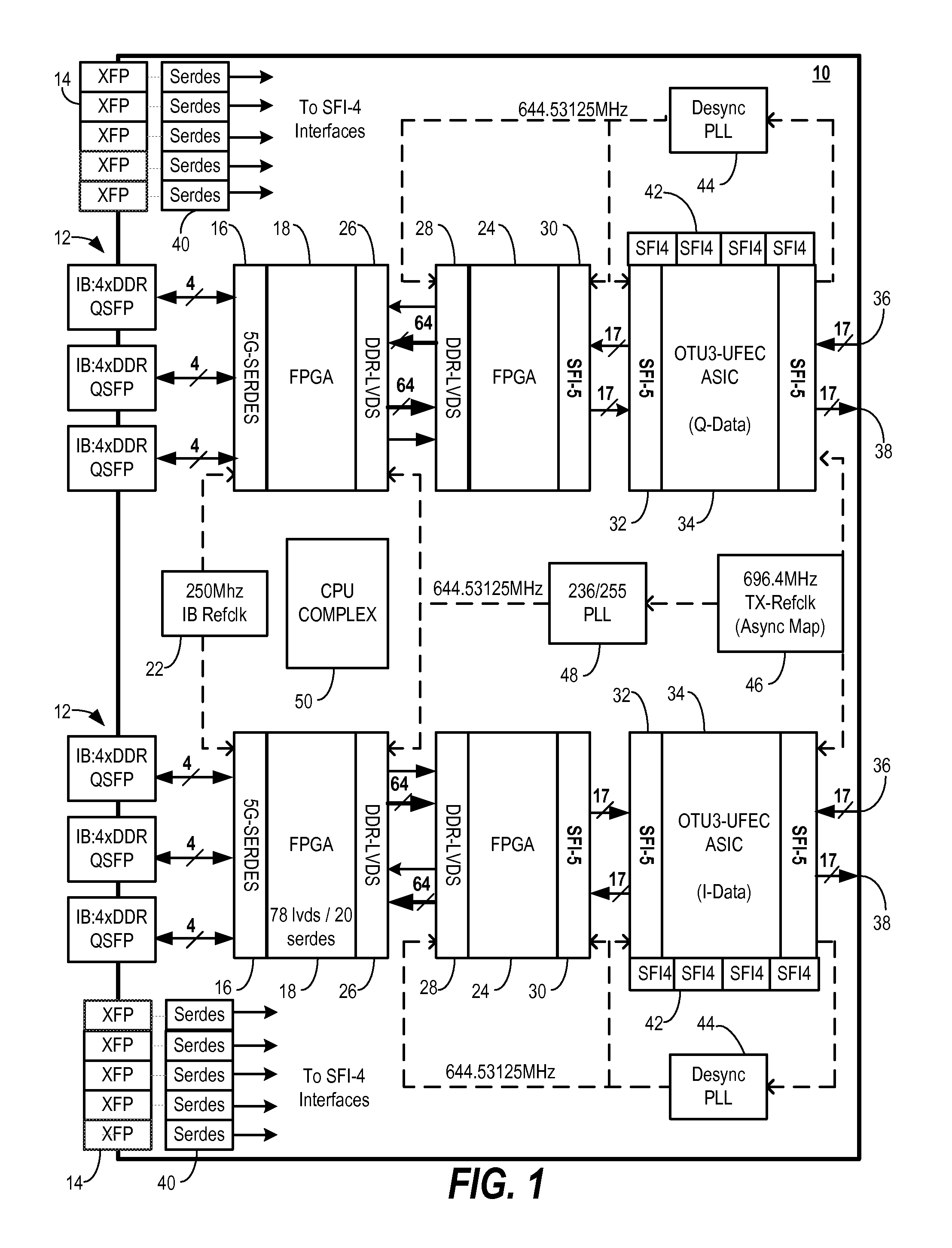High-speed optical transceiver for infiniband and ethernet
- Summary
- Abstract
- Description
- Claims
- Application Information
AI Technical Summary
Benefits of technology
Problems solved by technology
Method used
Image
Examples
Embodiment Construction
[0017]In various exemplary embodiments, the present invention provides a high-speed 100G optical transceiver for InfiniBand and Ethernet to frame InfiniBand (IB) and Ethernet into transparent Generic Framing Protocol (GFP-T). The optical transceiver utilizes an architecture which relies on standards-compliant (i.e., multi-sourced) physical client interfaces. These client interfaces are back-ended with flexible, programmable Field Programmable Gate Array (FPGA) modules to accomplish either IB or Ethernet protocol control, processing, re-framing, and the like. Next, signals are encoded with Forward Error Correction (FEC) and can include additional Optical Transport Unit (OTU) compliant framing structures. The resulting data is processed appropriately for the subsequent optical re-transmission, such as, for example, with differential encoding, Gray encoding, I / Q Quadrature encoding, and the like. The data is sent to an optical transmitter block and modulated onto an optical carrier. Al...
PUM
 Login to View More
Login to View More Abstract
Description
Claims
Application Information
 Login to View More
Login to View More - R&D
- Intellectual Property
- Life Sciences
- Materials
- Tech Scout
- Unparalleled Data Quality
- Higher Quality Content
- 60% Fewer Hallucinations
Browse by: Latest US Patents, China's latest patents, Technical Efficacy Thesaurus, Application Domain, Technology Topic, Popular Technical Reports.
© 2025 PatSnap. All rights reserved.Legal|Privacy policy|Modern Slavery Act Transparency Statement|Sitemap|About US| Contact US: help@patsnap.com



